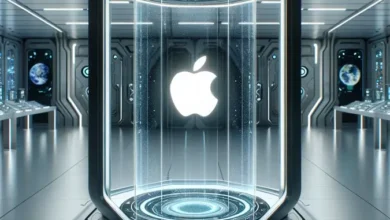An In-Depth Guide to Cisco: Understanding Networking, Products, and Innovations

Cisco is a tech giant with a longstanding reputation in networking, telecommunications, and cybersecurity. Known for powering the backbone of the internet and enterprise networks, Cisco is a leader in the technology industry, trusted by organizations worldwide. In this article, we’ll explore Cisco’s history, key products, technology innovations, and the role it plays in today’s digital world.
1. A Brief History of Cisco: From Startup to Global Giant
Cisco Systems was founded in 1984 by Leonard Bosack and Sandy Lerner, who initially worked together at Stanford University. Their goal was simple: to connect computers across different locations and networks. The couple developed the first multi-protocol router, allowing seamless data communication across separate networks. This revolutionary device paved the way for Cisco’s early growth and success in the tech industry.
From its humble beginnings, Cisco quickly rose to prominence, becoming the go-to name for enterprise networking solutions. In the 1990s, as the internet expanded, so did Cisco’s influence, developing a wide range of routers, switches, and other networking equipment. By embracing acquisitions, Cisco broadened its product offerings, moving into areas like cybersecurity and data center solutions. Today, Cisco stands as a leader in IT and networking, shaping how businesses and individuals interact with technology on a global scale.
2. Cisco’s Core Product Line: Routers, Switches, and Beyond
Cisco’s primary focus has always been on networking solutions, but the company has diversified significantly over the years. Here’s a closer look at its core product categories:
Routers and Switches: This routers and switches are the heart of its networking solutions. Routers connect multiple networks, directing data traffic efficiently, while switches connect devices within a single network. Cisco offers models for small businesses, large enterprises, and data centers, each tailored to meet specific performance and capacity needs.
Security Products: With the rise of cyber threats, It has placed a major emphasis on cybersecurity. Its security product line includes firewalls, VPNs, and threat detection solutions. Cisco SecureX, an advanced security platform, integrates with other security tools to provide a unified threat management system, offering businesses peace of mind.
Collaboration Tools: Cisco also offers collaboration tools designed to facilitate communication and teamwork. Cisco Webex, a popular video conferencing and collaboration tool, enables remote work and virtual meetings. Webex offers features like screen sharing, virtual whiteboards, and end-to-end encryption, making it a popular choice for businesses.
Data Center Solutions: it’s data center products support modern infrastructure needs, including cloud computing, storage solutions, and hyper-converged infrastructure. These solutions provide high-performance, scalable, and secure environments for companies of all sizes.
Through its wide range of products, It has established itself as an all-encompassing provider of networking and IT infrastructure, making it a trusted partner for businesses globally.
3. Cisco’s Role in Cybersecurity: A Robust Approach to Digital Defense
1As digital threats become increasingly sophisticated, cybersecurity has become a core focus for Cisco. The company’s approach to cybersecurity includes a combination of hardware, software, and integrated security solutions designed to protect networks from both known and emerging threats. It’s cybersecurity offerings can be categorized into several key areas:
Next-Generation Firewalls (NGFWs): Cisco’s NGFWs go beyond traditional firewalls by offering advanced threat protection and application visibility. They can identify, prevent, and mitigate a wide range of attacks, making them essential for organizations that prioritize network security.
Threat Intelligence with Talos: Cisco Talos is the company’s dedicated threat intelligence team, which analyzes emerging cyber threats and vulnerabilities. Talos shares real-time threat data with Cisco’s security products, ensuring they stay up-to-date against the latest cyber risks.
Endpoint Security and Multi-Factor Authentication (MFA): Cisco offers endpoint security solutions that provide visibility into all devices connected to a network. Multi-factor authentication solutions like Cisco Duo add an extra layer of security by requiring users to verify their identity through two or more methods.
Cisco’s robust cybersecurity solutions make it a leading choice for businesses and governments that need reliable protection against evolving cyber threats. Its commitment to cybersecurity helps organizations minimize risks, ensuring the integrity of their data and network operations.
4. Cisco’s Impact on the Future of Networking: SD-WAN, IoT, and 5G
Cisco is at the forefront of technological advancements that are shaping the future of networking. Here are some of the key technologies Cisco is investing in:
Software-Defined Wide Area Network (SD-WAN): Cisco’s SD-WAN solutions allow businesses to manage wide-area networks through software, improving flexibility, scalability, and cost-efficiency. SD-WAN enables organizations to use multiple types of connections, like MPLS, broadband, and LTE, optimizing traffic flow and ensuring consistent performance.
Internet of Things (IoT): Cisco IoT solutions enable businesses to connect, monitor, and manage IoT devices across various environments, including manufacturing, healthcare, and smart cities. Cisco’s IoT solutions integrate security and analytics, making it easier to gather data from IoT devices and turn it into actionable insights.
5G Network Infrastructure: With the rise of 5G, Cisco is working on solutions that leverage the benefits of this high-speed, low-latency network. Cisco’s 5G infrastructure solutions are designed to help telecommunications providers build and maintain reliable 5G networks, supporting faster connectivity and unlocking new possibilities for mobile and edge computing.
Cisco’s commitment to these emerging technologies ensures it remains relevant and ahead of the curve, supporting a future where connectivity is more efficient, secure, and accessible.
5. Cisco Certifications: Shaping the Future of IT Professionals
One of the most significant ways Cisco influences the IT industry is through its certification programs. Cisco certifications are globally recognized and cover various specializations, including networking, security, and collaboration. These certifications are grouped into different levels:
Entry-Level Certifications: These are foundational certifications for individuals new to the field of IT. Cisco Certified Technician (CCT) and Cisco Certified Entry Networking Technician (CCENT) are two popular entry-level options that provide a solid grounding in networking basics.
Associate-Level (CCNA): Cisco Certified Network Associate (CCNA) is one of Cisco’s most well-known certifications. It focuses on essential networking skills and is often pursued by individuals seeking roles as network engineers, technicians, or administrators.
Professional and Expert-Level Certifications (CCNP, CCIE): Cisco Certified Network Professional (CCNP) and Cisco Certified Internetwork Expert (CCIE) are higher-level certifications for experienced professionals. These certifications demonstrate advanced skills in areas like security, wireless networking, and data center management.
Cisco’s certification programs not only benefit IT professionals but also help organizations find qualified, knowledgeable candidates. Earning a Cisco certification is seen as a benchmark of excellence in the tech industry, giving professionals a competitive edge in the job market.
6. Cisco’s Commitment to Sustainability and Corporate Responsibility
Cisco takes its role as a global corporation seriously, particularly when it comes to sustainability and corporate responsibility. The company has made significant commitments to reduce its environmental impact and contribute positively to society. Cisco’s sustainability initiatives include:
Environmental Impact and Carbon Neutrality: Cisco aims to reach net-zero greenhouse gas emissions across its global operations by 2040. The company is investing in renewable energy, energy-efficient designs for its products, and sustainable packaging to minimize its environmental footprint.
Social Responsibility and Community Programs: Cisco contributes to numerous social initiatives worldwide, focusing on digital inclusion, education, and economic development. Programs like the Cisco Networking Academy help bridge the digital divide by providing free IT training and resources to students and professionals in underserved communities.
Ethical Business Practices: Cisco prioritizes ethical practices in its supply chain and operations. By enforcing strict standards for labor, environmental responsibility, and corporate governance, Cisco ensures its business practices align with global standards and customer expectations.
Cisco’s commitment to sustainability and corporate responsibility reflects its dedication to making a positive impact beyond its products and services.
Conclusion: Cisco’s Lasting Influence on the Tech Industry
Cisco’s influence on the technology landscape is undeniable. From its groundbreaking networking solutions to its strong focus on cybersecurity, Cisco plays a vital role in the modern IT ecosystem. The company’s innovations in SD-WAN, IoT, and 5G, combined with its strong cybersecurity stance, ensure that Cisco remains a leader in digital transformation.
Whether through its diverse product offerings, industry certifications, or commitment to social responsibility, Cisco continues to shape the future of technology. As we move into an increasingly connected world, Cisco’s role in providing secure, reliable, and scalable network solutions will only become more significant.




One Comment